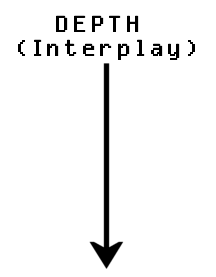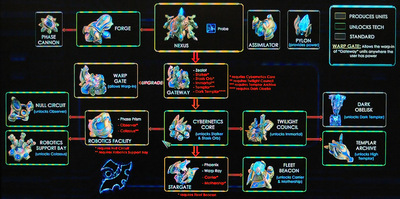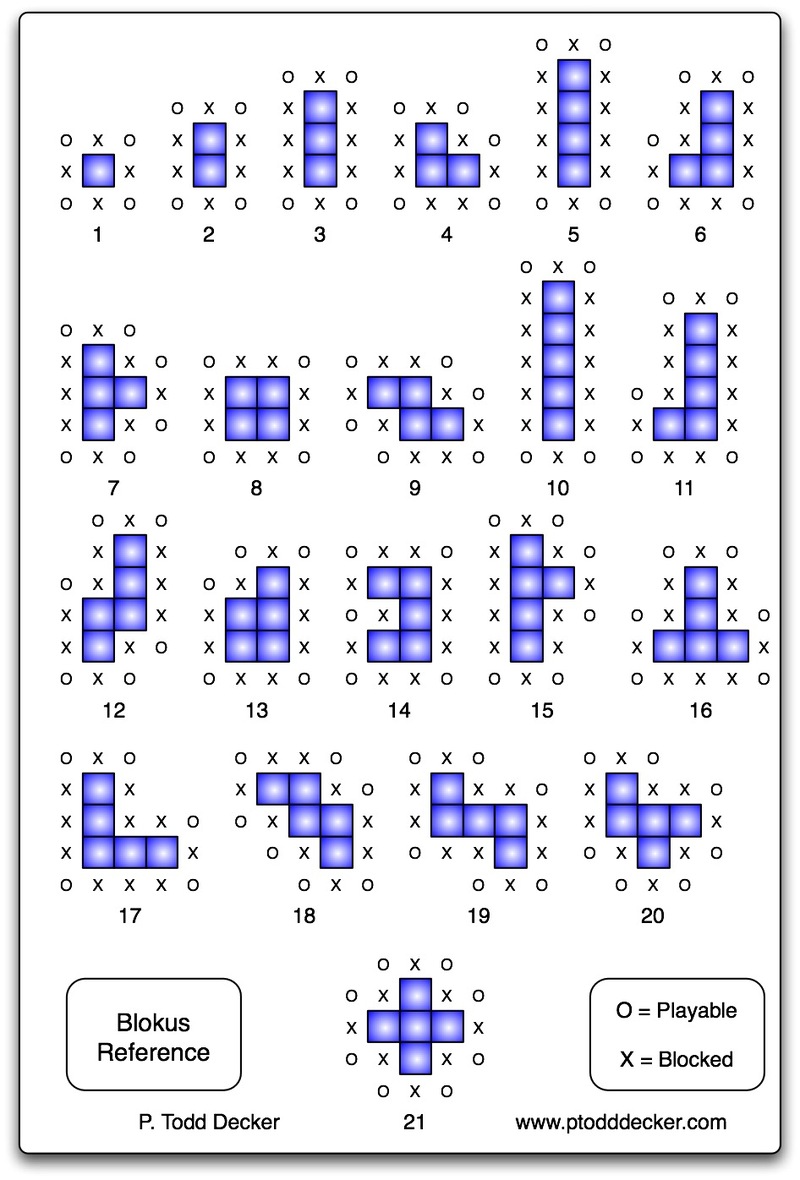Interplay is the core of truly dynamic and emergent gameplay. When game elements respond to each other and change appropriately and dynamically to various actions, a shared dialog is created. This dialog, like a spoken conversation, is flexible enough to cover different ideas or to explore the established subject. Whether between the computer controlled elements, players, or some combination of the two, this silent, action based, functional dialog gives truth to this quote from The Matrix Reloaded: "You do not truly know someone until you fight them," Seraph. For our purposes, let's replace the word "fight" with "interact with."

Besides creating this dialog, the design of interplay can have the following effects on a game system. Interplay design can...
- create closed loops of endless interactive potential: Think of the game Rock Paper Scissors (RPS). This game is perfectly balanced with only 3 moves. Each move can beat another, tie itself, or lose to the last. Because each move is perfectly countered with another, no one move is best. To overcome an opponent, you must counter their specific moves. In other words, rock doesn't beat all despite how strong and sturdy it seems. Whether a move is successful or not simply depends on the context. You can never beat the game of PRS. You can only beat your opponent. And no matter how good you are, you're always an option away from losing or tying. For these reasons RPS's design is a loop of internal energy like the impossible triangle seen right.
- create flow: Interplay can be designed like a chain reaction. For such scases, when the player does one action, a series of reactions are created. With each reaction, the player is then influenced to do more and more actions that result in more reactions thus feeding back into the scenario. This is how games create forward momentum. For example, after Mario JUMPs on a Parakoopa, the battle isn't over. Depending on a number of factors (enemy, environment, player actions) the dewinged Parakoopa remains a dynamic threat.
- create games with a lower learning curve: One of the reasons RPS is such a great game is that it's easy to teach, pick up through observation, and play. The name of the game contains all the moves, and the rules on what counters what are fairly logical. Because the game is purely designed around balanced interactivity, it doesn't need any additional rules or special moves. You can play it over and over with just about anyone without completing/beating the game.
Every mechanic certainly doesn't need to be designed to counter some element of contrary motion. But like suspension, powerups, and variation, a little bit of interplay goes a long way in building counterpoint through level design. Some literary works and movies are often described as being deep because the more you invest in them through investigative and critical pondering, the more they give back to you by way of fostering interesting ideas or proving to be a more cohesive work. Video games are the same way. The more you put into a game with branching, chain, or triangle of interplay (more on each later), the more each action/element in a given scenario shapes the nature of the challenge and the more the game responds to your actions. The better a game is designed, the more likely its response to the player's actions will be accurate and well communicated. When this happens, the gameplay experience becomes more personal as you continue to learn and interact with the game system/player opponent and visa versa. As long as the game doesn't bend or break its own rules to counter the player's efforts, with a certain amount of interplay in its design, the game can be considered deep.
But many people, book/film/game critics alike, confuse depth with complexity. Interplay (depth) is rooted in interactivity, while complexity is rooted in knowledge and information. Due to interplay, player actions change the nature of the game. Complexities are all about presenting a greater range of information that must be processed at a given moment/state of gameplay. Complexities are the range of data that players must sort through in order to figure out what they don't need/can ignore/can optimize/can simplify before making an informed decision/action. Because in nearly all video games, making informed decisions is how players reach the goal, adding more complexities/information to a game can have a lot of serious negative effects.

Complexities can create the following effects on video games.

- A higher learning curve: Instruction manuals may be on the decline, but strategy guides are thicker, longer, and more detailed than ever. The tutorials in some games are so long and detailed that they even make my head spin. Video games are interactive systems to be learned. Some of the best games are also some of the best teachers. The more complexities you have in a game, the more the player must learn at least on the most basic level (memorization). Some games only present a few elements to the player at a time, while other throw the whole book at you and let you sort out the information. See list below for examples.
- Stresses knowledge over other types of skill: Among the 5 different skill types, adaptation stems from interactivity/interplay, timing and reflex stem from the factor of time, and dexterity stems from with having to physically manipulate controllers to play. But knowledge is all cerebral and internal. The more a game stresses knowledge as its main required skill type, the more the dynamic and interactive gameplay potential drops. Consider a game like Professor Layton and the Curious Village. Because players have all the time they need to answer a puzzle, timing, reflex, and dexterity are practically removed from the skill set. Also, the puzzles are designed with no interplay. You either input the right answer or you fail and get a chance to try again. Because most of the puzzles are very different from one another, Professor Layton is a game that is almost entirely knowledge based, which naturally creates a lot of complexities.
- Simple (linear) Optimization: In an interactive game system, complexities are closely related to variation. Unfortunately, depending on the type of game, complexities don't make the gameplay more varied but work to reduce it. Take JRPGs for example. Some of these games have a small book worth of information on different enemies, characters, items, attacks, and/or magical spells. More often than not, all of this varied content gets reduced. This is due to the fact that games are all about function. A player who intends on progressing through the game is taught to think in terms of what will achieve victory. It's not that the player necessarily wants to reduce an entire magic spell list to a few power spells. The player is simply playing along to the system the game has taught.
- In games with customisable stats, like Call of Duty 4, players tend to gravitate toward the options that give them more speed (movement) power (offense) or health (defense). In COD4's case, the customisable stats in multiplayer decreases the potential for interplay and increases the amount of complexities and abstractions.
- Many RPGS are reduced to exercises of attack-attack-heal where each attack is the most damaging or most cost effective (MP/ammo/ect) move while each healing move is the option that will heal the most HP per turn for the most characters. Once you get moves like Lumnaire (Chrono Trigger), Ultima (FF6), or Earthquake (Pokemon) it's hard to find situations where you wouldn't use them. When a game is linear like RPG battle systems typically are, every combat decision is measured on that linear scale. The combat in some games can even be reduced to who's doing more damage over time and thus almost completely exclude interplay.
- Games with heavy combos systems can be reduced/optimized in a different way. Watch this video to learn about combos. Being able to link attacks together into an inescapable string of moves is an effective way to achieve victory while at the same time potentially reducing the opponent's level of interactivity with the game to zero. I've been in combos before where the only thing I could do was hope that my opponent messed up before all my health disappeared. In many ways, trying to reduce your opponent's health to zero is functionally similar to the linear scale that some RPG battle systems are designed around.
Games With Lots of Complexities
 Blokus: For every turn in this game, you have to consider how each of the 3 other players will play one of their 21 uniquely shaped pieces (see image right). Because the gameplay is about maximizing your piece usage and taking up as much space as possible to block other pieces, a fairly straight forward and linear strategy can be applied to simplify/reduce the game. Look at the work P. Todd Decker put into devising a top level strategy for Blokus.
Blokus: For every turn in this game, you have to consider how each of the 3 other players will play one of their 21 uniquely shaped pieces (see image right). Because the gameplay is about maximizing your piece usage and taking up as much space as possible to block other pieces, a fairly straight forward and linear strategy can be applied to simplify/reduce the game. Look at the work P. Todd Decker put into devising a top level strategy for Blokus.
- Star Craft/Pikmin: In both of these games the battle/playing field can be littered with various units all with different abilities, roles, and lines of motion. Bases must be constructed, resources gathered, and opponents attacked. To play well, you must keep track of just about everything that's going on across the battle field. High level players fight hard for every Siege Tank or every marble/cherry/Pikmin. Keeping track of the vast number of moving factors in real time is part of the appeal of RTS games.
- Super Smash Brothers Brawl: When entering a match in a tournament, there is an almost overwhelming amount of information you must consider before even the first round begins. Each character in the game has a large amount of moves with a considerable amount of variable use. Jab attacks can end after 1 hit, 3 hits, or go into a rapid hitting attack. Some forward tilts and smashes can be angled slightly up or down. Smashes can be charged. And all air moves are analog because the character's position is independently controlled from the move (for the most part). Each characters also has special attacks, which range from grabs, projectiles, reflectors, shields, to teleports. All these moves have nuanced and dynamic applications. On top of this, each stage adds another layer of complexity to a fight. Picking the right stage against the right opponent can make the difference in the outcome of a match. In team battles (2v2) the amount of complexities increase significantly.
- Almost every fighting game requires players to learn a considerable amount of data to play well. Compared a game like Super Mario Brothers where one can probably list most of the enemies, powerups, and level elements in the game easily by memory, fighters almost require heavy study to play at a high competitive level.
- Spelling Bee: This national competition contains over 22,000 words in its word list. Sure there are tricks and techniques to help with spelling, but that's still quite a lot of information that each player can be quizzed over on any given turn.
- Scrabble: Check out this product description from amazon. "Every Word Counts! Nearly every Scrabble player has been involved in a dispute over what words are acceptable on a Scrabble board. Now you can settle all those squabbles with Collins Scrabble Tournament and Club Word List. Collins Scrabble Tournament and Club Word List is the most comprehensive Scrabble word list ever, including World English from Australia, Canada, New Zealand, South Africa, UK and USA brought together in a single list. With over a quarter of a million permissible words, including inflected forms, Scrabble Tournament and Club Word List is the most extensive word list ever published..." Can you believe that some top level players have all of these words memorized and on standby in their minds when playing? That's a lot of data/complexities. Fortunately, the random letters that are drawn help narrow the possibilities available for a single turn.
- Pokemon Diamond and Pearl: In a given pokemon battle, you have to consider which 6 of the games 493 pokemon your opponent chose to bring to the battle. For each pokemon, you have to consider what kinds of stats they have (HP, attack, defense, special attack, special defense, and speed) what type they are (17 total), what four attacks they have (467 total), what kind of item they're holding (55+ items), and what kind of ability they have. Though like all RPGs, this great volume of complexity and possibilities gets reduces to the fastest and strongest, that's still quite a lot of information to digest. Just look at this information page on one of my favorite Pokemon of all time.
In part 3, we'll look at how interplay and complexities come together through game design and how the two can be balanced to achieve the best of both worlds.